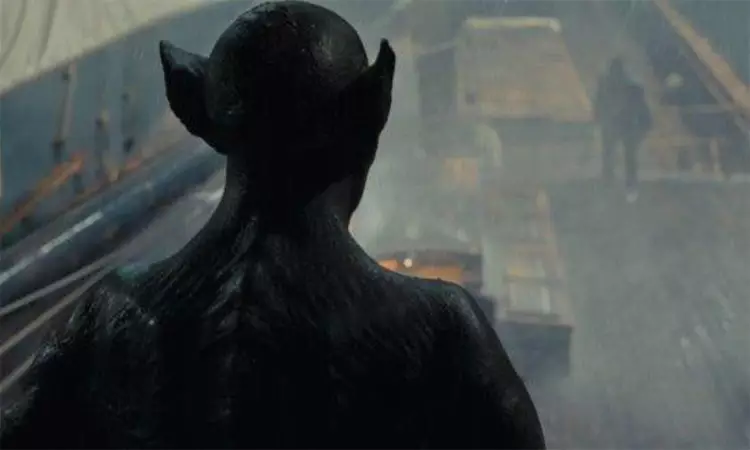In the realm of horror cinema, few narratives evoke a sense of impending doom as vividly as “The Last Voyage of the Demeter.” Directed by André Øvredal, this film takes its inspiration from Bram Stoker’s “Dracula,” specifically the harrowing passage known as ‘The Captain’s Log.’ From its very title to its chilling opening scene—which presents the ship as an abandoned coffin on the shore of Whitby—the film immerses viewers in a world steeped in fatalism. Captain Eliot’s declaration, “We’re a doomed crew, on a doomed ship,” serves not only as a plot device but as a philosophical underpinning that casts a shadow over every character’s journey. Characters are trapped within a narrative where they are mere vessels carrying doom across treacherous waters.
One of the most compelling aspects of Øvredal’s adaptation is the introduction of new characters that serve to alter the dynamics of Stoker’s original story. The character of Dr. Clemens, played by Corey Hawkins, stands out as a beacon of change. A black man of science navigating a predominantly white, prejudicial society at the turn of the century, Clemens embodies the struggle for acceptance and belonging. His presence complicates the narrative, introducing themes of racism and personal growth that resonate far beyond the film’s coastal horror. The character becomes a representation of hope amid a cacophony of despair, challenging the oppressive norms of his environment.
Moreover, the inclusion of Anna, an ailing stowaway portrayed by Aisling Franciosi, and Toby, the captain’s grandson played by Woody Norman, enriches the emotional fabric of the narrative. Where once there existed only a brief mention in Stoker’s original work, these fully fleshed-out characters act as conduits for the film’s exploration of innocence versus evil. Toby’s youth introduces moral ambiguity, while Anna’s knowledge of the vampire threat adds layers of foreboding that heighten the tension aboard the Demeter.
A Shift in the Portrayal of Evil
In “The Last Voyage of the Demeter,” Dracula is resurrected not as the suave seducer of modern adaptations but as a terrifying creature reminiscent of earlier portrayals such as in F.W. Murnau’s “Nosferatu.” This regression to a more monstrous figure highlights the film’s commitment to horror over charm, igniting a visceral fear within the audience. The vampire here is a relentless predator, one that strikes fear into the hearts of its victims, showcasing a more primal fear that the crew must contend with. As Captain Eliot ominously notes how the creature picks off the crew “one by one,” viewers can’t help but feel the claustrophobic grip of terror that envelops the ship.
Drawing parallels with Ridley Scott’s “Alien,” Øvredal’s film transforms the Demeter into a floating haunted house. Isolated in the vastness of the sea, the crew is cut off from the safety of land, intensifying their imminent peril. The film deftly illustrates the overwhelming sense of despair, as discussions of bonuses and the ship’s destruction evoke a haunting familiarity that diverges into the supernatural. This ethereal blend raises questions about economic survival versus the very threat to life that endangers the crew’s existence.
As the narrative unfolds, the Demeter becomes an emblem of an era in decline, encapsulating the tensions of the late nineteenth century as steam-powered vessels and industrial advancements loom on the horizon. The wooden, sail-driven ship symbolizes not just a mode of transportation but the archaic structures of a world about to be overturned. The crew’s haunting experiences on board mirror the inevitable transition away from old-world beliefs towards a modern consciousness fraught with new horrors.
Ultimately, “The Last Voyage of the Demeter” serves as a captivating retelling of a centuries-old tale that transcends its literary origins. Rather than merely restaging a gothic classic, Øvredal’s film challenges viewers to reflect on issues of race, societal expectations, and the pervasive nature of evil. While the original Stoker text laid a stone foundation, this adaptation paves the way for a narrative that trembles with modern relevance, daring us to consider: perhaps not all is doomed, and amidst catastrophe, glimmers of hope and renewal can still emerge from the depths of despair.

